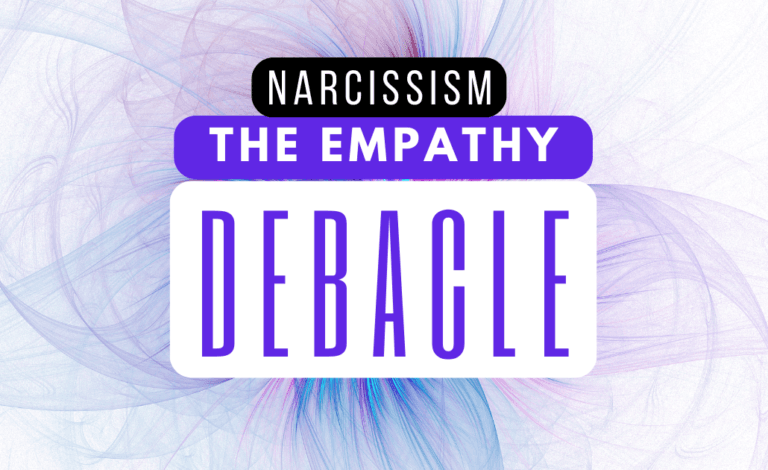5 Ways Narcissists Create Chaos: Understanding the Cycle of Abuse and Control
Why is there so much chaos?
Narcissists are known for their ability to create chaos in the lives of those around them, often leaving a trail of emotional devastation. This chaos isn’t accidental; it’s a calculated strategy used by narcissists to exert control and maintain power in their relationships. Understanding the cycle of abuse and control that narcissists perpetuate is crucial for anyone dealing with this type of toxic behavior. In this article, we’ll explore five key ways narcissists create chaos and how you can recognize and protect yourself from these destructive patterns.
1. Instigating Conflict to Assert Control
One of the primary ways narcissists create chaos is by instigating conflict. Whether in personal relationships, at work, or within social circles, they thrive on discord. Narcissists often pick fights over trivial matters, blow small issues out of proportion, or create drama where there is none. By doing so, they shift the focus onto themselves and establish a dynamic where they hold all the power. This constant conflict keeps others off balance, making them more susceptible to the narcissist’s influence and control.
How to Protect Yourself: Recognize when conflicts are being manufactured or exaggerated by the narcissist. Rather than engaging in the drama, maintain your composure and refuse to be drawn into unnecessary arguments. Setting boundaries and limiting your involvement in their conflicts can help minimize the chaos they create.
2. Gaslighting: Distorting Reality to Cause Confusion
Gaslighting is a psychological manipulation tactic where the narcissist distorts reality to make their victim question their own perceptions, memories, and sanity. By rewriting history or denying things they’ve said or done, narcissists create an environment of uncertainty and confusion. This chaos serves their need for control, as the victim becomes increasingly dependent on the narcissist’s version of reality.
How to Protect Yourself: Stay grounded in your own reality by keeping a journal or other records of interactions with the narcissist. Trust your own memory and instincts, and seek external validation from trusted friends, family, or a therapist. Knowing that gaslighting is a deliberate tactic can help you resist its effects.
3. Triangulation: Pitting People Against Each Other
Triangulation is another tool in the narcissist’s arsenal. This tactic involves bringing a third party into the relationship or conflict to create jealousy, rivalry, or competition. By manipulating others into taking sides or fueling misunderstandings, the narcissist creates chaos and division. This not only keeps their victims focused on the conflict rather than the narcissist’s behavior but also reinforces the narcissist’s control over all parties involved.
How to Protect Yourself: Be aware of the signs of triangulation, such as the narcissist frequently involving others in personal issues or spreading misinformation. Refuse to participate in the game and communicate directly with others involved to clarify any misunderstandings. Building a strong support network outside the narcissist’s influence can also help you stay grounded.
4. Love-Bombing and Devaluation: The Cycle of Emotional Highs and Lows
Narcissists often create chaos through a cycle of intense emotional highs and lows. In the love-bombing phase, they shower their victim with affection, attention, and praise, creating a sense of euphoria and deep emotional attachment. However, this phase is inevitably followed by devaluation, where the narcissist becomes critical, dismissive, and even cruel. This unpredictable shift between idealization and devaluation keeps the victim in a state of emotional turmoil, constantly seeking to return to the love-bombing phase.
How to Protect Yourself: Recognize that the emotional highs created by love-bombing are a manipulation tactic, not genuine affection. Understanding this cycle can help you detach emotionally and see the relationship for what it truly is. Focus on maintaining your self-worth and resist the urge to chase the narcissist’s approval or affection.
5. Blame-Shifting and Projection: Deflecting Responsibility
Blame-shifting and projection are common tactics narcissists use to avoid accountability and create chaos. They may accuse others of the very behaviors they themselves are guilty of, or deflect blame onto their victim when confronted. This constant shifting of responsibility creates confusion and self-doubt in the victim, making it difficult to hold the narcissist accountable for their actions.
How to Protect Yourself: Stay focused on the facts and don’t allow the narcissist to twist the narrative. When confronted with blame-shifting or projection, calmly reiterate the truth and refuse to take on responsibility for the narcissist’s actions. Seeking external validation from trusted sources can also help you maintain clarity in the face of these tactics.
Breaking Free from the Cycle of Chaos
Narcissists are masters of creating chaos, using tactics like instigating conflict, gaslighting, triangulation, emotional highs and lows, and blame-shifting to maintain control over their victims. Understanding these strategies is the first step toward protecting yourself and breaking free from the cycle of abuse and control. By recognizing these behaviors, setting firm boundaries, and seeking external support, you can reclaim your sense of self and move toward healthier, more stable relationships.
create chaos create chaos create chaos create chaos create chaos create chaos create chaos create chaos create chaos








